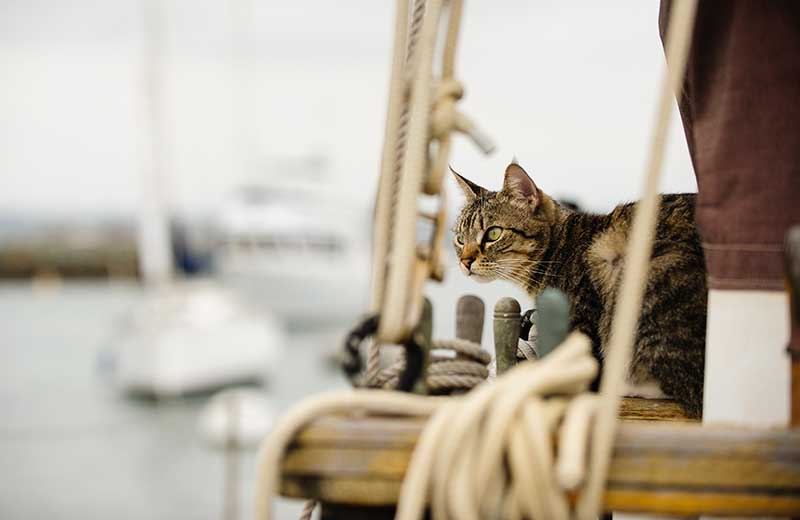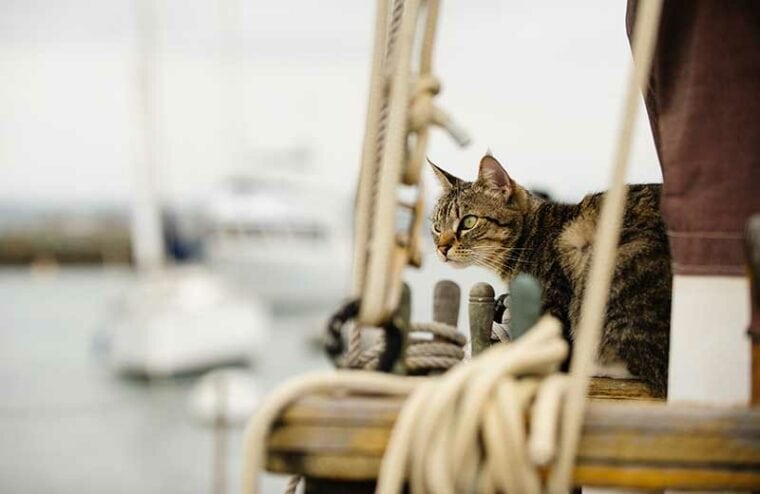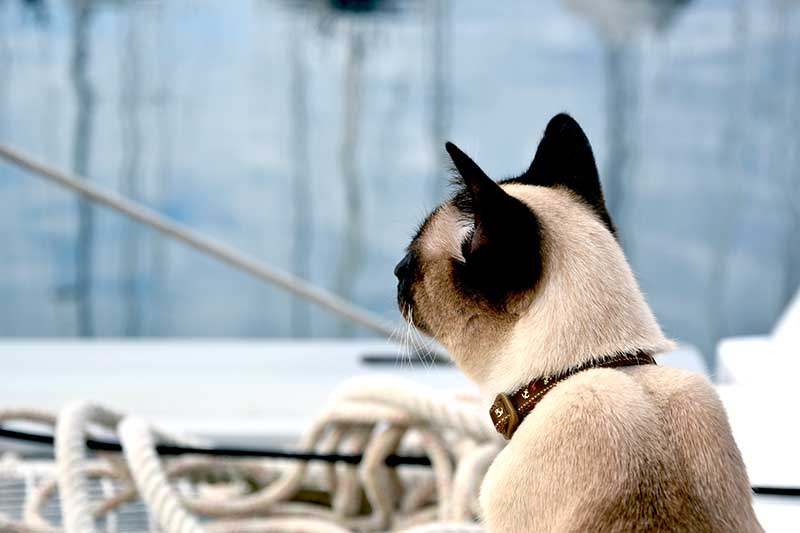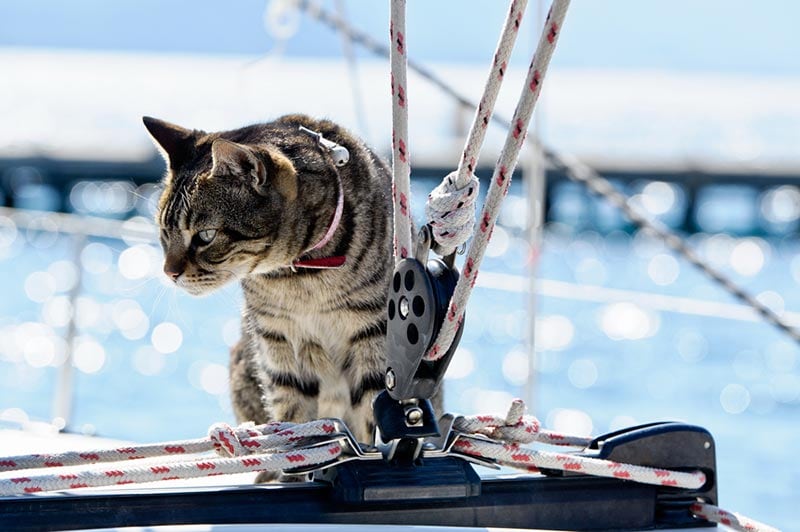
[ad_1]

Sailors and cats have a long and storied history together. Egyptian sailors were probably the first to bring cats along for voyages to provide companionship and vermin control. Evidence also indicates that kitties accompanied Viking explorers 1.
A friendly feline was often the best way to protect a ship’s rations from being broken into and destroyed by ever-present mice and rats. Sailors also often observed cats for clues about upcoming weather, as many believed cats could predict storms. Throughout history, sailors have adopted cats while in port to keep them company while away from home. Several US and Royal Navy vessels have had unofficial feline mascots.

How Did Cats Help Sailors?
Cats provided vermin control, weather warnings, and companionship. Rats and mice were often found on ships, attracted by grain stores and other rations. Rodents created problems by chewing through ropes and contaminating stored food. Effective pest control was often a matter of life or death for those traveling the high seas.
Cats also provided seafarers with information about the weather. Because cats can detect barometric pressure changes, they’re often able to sense oncoming storms. Sailors often watched cats for clues, like attempting to get off the ship, to help judge upcoming weather conditions.
But cats also offered companionship to sailors away from home and loved ones for years at a time. Ships’ cats in the modern era have often served as mascots, even during times of war. They were often treated as adored crew members and given their own kitty hammocks. Some ships had several cats, and kittens were often born on board and raised by crew members.

What Was Life Like for Ships’ Cats?
Ships’ cats were treated pretty well—most were considered full crew members. Cats that died at sea were often given sea burials with complete honors. They were important enough to spur moments of cooperation between enemy combatants. One crew asked the commander of the U-Boat, who had torpedoed their vessel, to allow them to return to their sinking ship to save their ship’s cat, Mickey. The German commander agreed and permitted the rescue action.
Are Cats Really Good at Catching Mice?
It depends entirely on the cat! Some enjoy flexing their hunting chops, and others simply couldn’t be bothered. Indoor cats that have more than enough to eat are often disinclined to stalk, kill, and eat mice they may encounter. And while they can hear and smell mice, indoor cats often don’t have access to the areas rodents like to hide, such as between walls and in crawl spaces.
Outdoor pets, on the other hand, are often quite proficient killers, responsible for killing untold numbers of small critters. Back in 2013, outdoor cats were responsible for the death of around 12.3 billion small animals and 2.4 billion birds per year in the US alone. Ownerless cats tend to be better hunters and often prey on birds, rodents, and other small creatures.
Are There Any Myths about Cats and Ships?
Some sailing legends hold that cats bring good luck, particularly polydactyl cats with extra digits. These kitties’ extra toes were believed to give them an advantage when it came to catching pests and staying on their feet in rough seas. The famous polydactyl cats who live in Ernest Hemmingway’s old house in Key West are descended from a multi-toed kitty given to the author by a ship’s captain.
Cats were also thought to have magical powers, including being able to keep ships safe in storms. Sailors believed being approached by a cat brought good luck. Bad luck ensued if a cat started towards you and then turned and walked away. Cats were also believed to be capable of summoning storms using their tails. Folklore held that cats that fell overboard summoned storms in retribution and dished out 9 years of bad luck to any survivors of their watery wrath.


Conclusion
Sailors have been bringing cats on board to provide rodent control and information about the weather for ages, but they were also taken on voyages to provide companionship during long trips. Many served as unofficial but well-loved mascots. Some cats on military vessels were considered honored crew members and often provided with cozy places to curl up and tiny hammocks to sleep in. Cats that died at sea were even given burials with full honors.
Featured Image Credit:
[ad_2]
Source link

